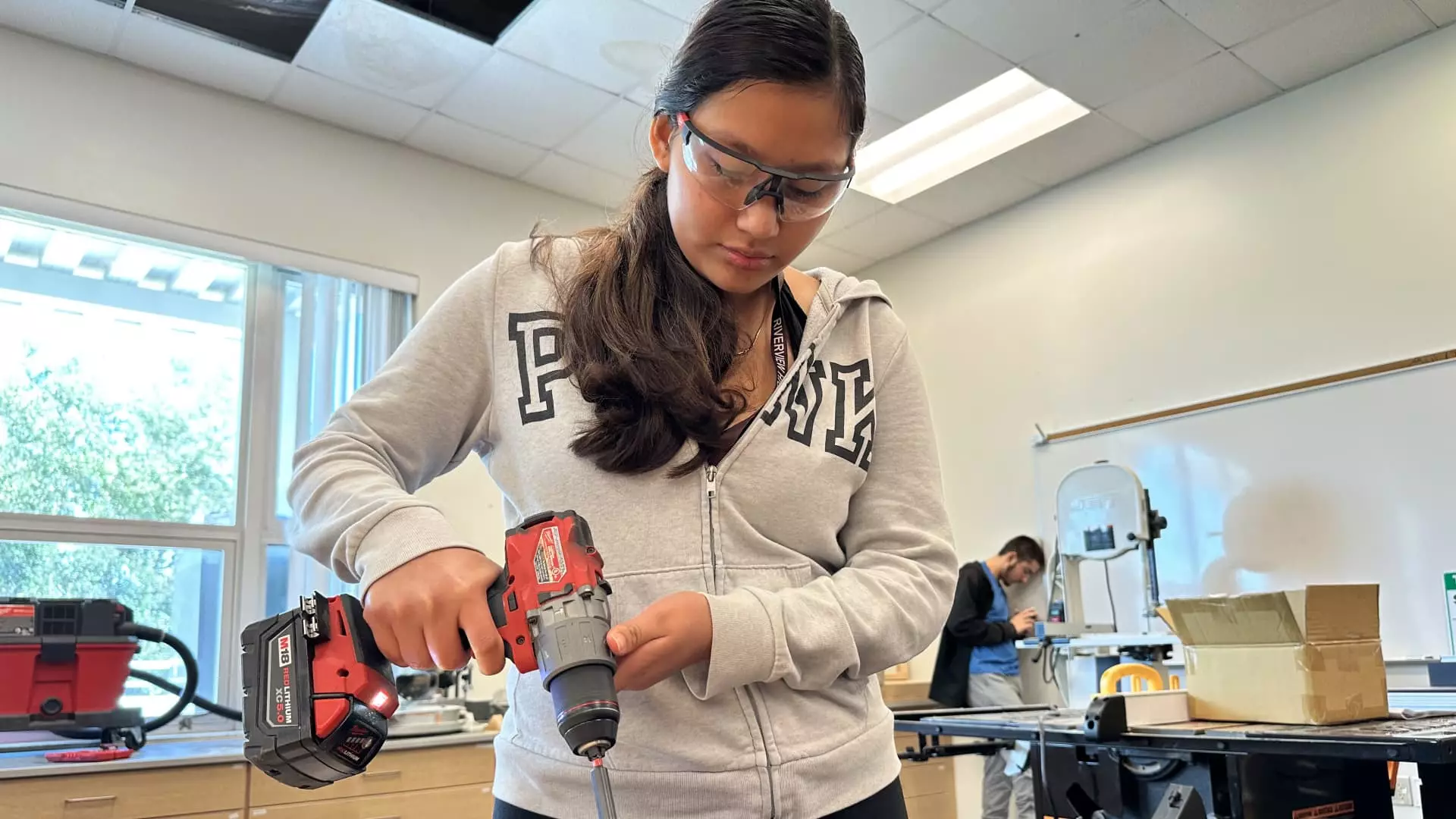The landscape of education is undergoing a significant transformation, marked by a noticeable shift in how young people regard traditional routes to success. Vocational training programs, like the one at Riverview High School in Florida, are gaining momentum as students seek hands-on experience and practical skills that lead directly to employment. The story of Angela Ramirez-Riojas is emblematic of this broader trend.
For many young people today, the allure of college is being challenged by the prospect of vocational education. Angela, an 18-year-old high school senior, represents a growing cohort of students who see vocational training as not just a viable option but often a preferred pathway. Her decision to enroll in a construction program reflects a thoughtful consideration of her future, shaped in part by her grandfather’s influence in the construction field. Angela’s admiration for her grandfather’s skilled handiwork and intelligence echoes a sentiment shared by many of her peers who are increasingly recognizing the value of tangible skills over theoretical knowledge.
This focus on immediate applicability of skills reveals a profound change in mindset among today’s youth, who often prioritize quick entry into the job market to achieve financial independence. The construction academy at Riverview High School, which started three years ago, exemplifies this shift, offering students like Angela direct avenues to gain vital job skills while answering a pressing need for skilled labor. Erin Haughey, the school principal, articulates this vision: it is about nurturing motivated students who wish to contribute meaningfully to their communities through hands-on work.
A critical factor driving the growth of vocational education is the nationwide labor shortage in skilled trades. According to reports, the construction industry alone faces a demand for over half a million additional workers annually, highlighting an urgent need for skilled laborers. The unemployment rate in this sector sits at a mere 3.2%, significantly lower than the national average. This scenario not only fills job vacancies but also brings competitive wages, further enticing students like Angela.
Trade programs are no longer perceived as a last resort; they have evolved into sophisticated educational track options that promise better economic returns compared to traditional four-year college degrees. For instance, median earnings for new construction hires stand at $48,089—considerably higher than many entry-level professional service jobs. This serves as a wake-up call for students and parents alike, encouraging them to rethink the value of vocational education.
The common narrative that a four-year degree is the only path to success is being challenged. Recent surveys indicate that 49% of high school students see vocational training, trade programs, or degrees from two-year colleges as sufficient for achieving their career goals. Importantly, 56% believe that real-world experience trumps formal education. This shift reveals a growing recognition among students that hands-on training can be equally or more valuable compared to traditional academic routes.
Ted Jenkin, a financial planner, emphasizes this point, arguing against the outdated notion that a bachelor’s degree is the gold standard for success. With the costs of higher education rising and student debt becoming a critical issue for many, there’s a compelling argument for students to consider vocational pathways that promise both employment and advancement without the burden of exorbitant student loans.
As society grapples with the implications of these shifts, it becomes clear that vocational training is not just about filling current job vacancies; it represents a broader cultural change. The so-called “toolbelt generation” is a testament to the idea that success can be achieved through diverse educational paths that extend beyond the traditional classroom.
Programs like the one at Riverview High School are not only crucial for students’ immediate employment prospects but also vital for the long-term health of the economy. By investing in skills training and emphasizing vocational education, communities can cultivate a workforce ready to meet the demands of an evolving job market.
As vocational programs gain traction among today’s youth, it becomes increasingly evident that the future is not solely about earning degrees but rather acquiring skills that lead to rewarding careers. This evolving perspective presents a promising pathway for both individuals and the economy as a whole, fostering growth in sectors that are fundamental to society’s infrastructure. For students like Angela Ramirez-Riojas, the journey towards a fulfilling career is just beginning, and the skills she acquires will serve as the foundation for her professional future.

